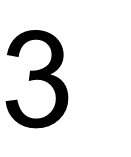The water samples collected during offshore, estuary and pontoon work were analysed the next day in chemistry and biology laboratories. This was in order to obtain measures of nitrate, silicate, phosphate, chlorophyll and oxygen concentrations, and to analyse phytoplankton and zooplankton samples.
Dissolved Oxygen Concentration - determined using the Winkler method (Winkler, 1888).
Nitrate - This was determined using flow injection analysis, a method that converts nitrate to nitrite and determines concentration based on the spectrometry of a nitrite complex (Strickland & Parsons, 1972).
Silicate - The concentrations of silicate were determined by spectrophotometry.
Phosphate – The concentrations of phosphate were determined by spectrometry.
For nitrate, phosphate and silicate, standards and blanks were produced to calibrate our measurements against. Calibration curves of peak height versus concentration (nitrate) and concentration versus absorbance (Phosphate and silicate) were used to determine the nutrient concentrations and correct for any background deviation.
All of the above techniques are available in Timothy R. Parsons (1984) Manual of Chemical & Biological Methods for Seawater Analysis (Link) and there’s also an online description of these processes here:
https://scripps.ucsd.edu/ships/shipboard-technical-support/odf/documentation/nutrient-analysis - (Scripps institute of Oceanography Link)
The water samples were passed through a GFF filter on board and these filters then placed in tubes of 90% acetone which were frozen overnight – this enabled the cells to break away from the filters which were removed the next day in the lab. The acetone was then placed into a cuvette and ran through a fluorometer, producing a value that was inserted to the following equation
(Amount of Acetone/ Amount of water filtered) x fluorometer reading
From the water samples – 100ml was added to a bottle containing lugol’s iodine to both stain and increase the density of the phytoplankton. This 100ml was transferred to a tube and left overnight by which time the phytoplankton had accumulated at the bottom, allowing the removal of the top 90 ml to leave a phytoplankton rich 10ml from which analysis could be carried out. Sedgewick-Rafter counting chambers have a capacity of 1ml and consist of 1000 squares, 100 of which were counted per sample under a light microscope. Tallying the species of phytoplankton present here enabled the number of each species per litre to be determined for comparison between sites and depths.
In order to preserve zooplankton net samples, 10ml of 10% formaldehyde was added to each bottle – sometimes after extracting a little to look at some live organisms. For the enumeration of zooplankton – a 10ml sample was applied to a Bogorov counting chamber, viewed under a light microscope and the number of each tallied. Again, this was then multiplied up to give a value per litre of seawater. It must be noted that the amount of zooplankton per litre of seawater cannot be quantified for the offshore due to vertical sampling using a phytoplankton net.

Parsons, R. (1884). Manual of Chemical & Biological Methods for Seawater Analysis. Elsevier Ltd.
Strickland, J.D & Parsons, T.R. (1972). A Practical Handbook of Seawater Analysis. Bull. Fish. Res. Bd. Can. Volume 167.
Winkler, L. (1888). Die Bestimmung des in Wasser Gelosten Sauerstoffes Berichte der Deutschen Chemischen Gesellschaft. Vol. 21. Issue 2. Pp 2843-2855.

of group 3 and not necessarily those of the University and NOC
